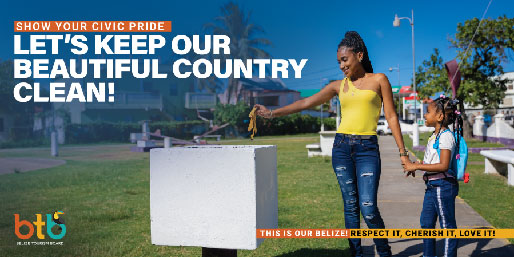CHAT Tourism - Can We Wear a Scarlet ‘S’?

Belize is the official host destination for the inaugural 2024 World Travel Sustainability Awards (WTSA). This is a big deal. The WTSA is a category within the broader World Travel Awards that specifically recognizes destinations, organizations, and companies that exhibit above-par sustainable tourism practices. Some sub-categories within the WTSA include sustainable tourism destination, sustainable tourism attraction, sustainable lodge, and more. In short, this global award is about all things, people, places, and companies that support carbon reduction, diversity and inclusion, profit with purpose, sustainable supply chains, and the like. After all, sustainable tourism means paying attention to concerns for economic, social, and environmental issues.
Belize’s environmental ethos is holistic and exemplary. The government’s recent Blue Bond deal, all of our nature reserves, the tourism industry’s diligence to sustainable development, the country’s commitment to reaching the Sustainable Development Goals (SDGs), our climate change mitigation actions, and not to mention the countless international media publications about our well preserved natural environment. It is understandable that Belize has been selected to host the esteemed awards- right? Nevertheless, while our sustainability efforts are on the right track, we have to wonder if a few of our broader cultural habits hinder how well we can wear that “S” for sustainability on our chests and brand. In Nathaniel Hawthorne’s “The Scarlet Letter”, Hester Prynne is made to wear a scarlet “A” on her chest as a symbol of shame for her perceived sin and secrecy. Hosting the WTSA means that Belize will be wearing a proverbial scarlet “S”. While we can boast about our passion and sacrifice for the environment, is there anything that we might be hiding?
Belizeans have a dirty little secret. The Secret is that too many Belizeans litter and we do not recycle enough. What is littering? Littering is the improper disposal of waste products such as packaging, food, rubbish, scraps, or even cigarette butts. The question is why do we litter and why don’t we recycle more?
In 2019 a Belize- Waste Data Report, looked at waste generation and disposal within Belizean households in rural and urban areas. When looking at household behaviour towards waste disposal, the report found that most Belizeans, in rural and urban areas, use a collection service if one is provided. If the service is unavailable, it leads to the waste being dumped or burnt. Recyclable materials (organics, plastics, metals, glass, paper) represent nearly 90% of the overall waste stream. Interestingly, the litter streams contained more recyclable plastic content than household and commercial waste streams. In Belize City, the report indicates that 100% of disposable is collected. How can this be if so much of it can be seen on the streets, drains, parks, yards, etc.? Littering- that is how.
The report did not answer what causes people to litter. That might be cultural and we might all have some thinking to do. If we dispose of most household waste well enough, why do we litter when we are out of the house? The environment and all of the country is also our home- especially our home. Can we wear that scarlet “S” at the WTSA award? YES! However, we have to confess that we litter a lot. Arguably, The Scarlet Letter ends in a theme of confessions and redemptions. Belize has already passed legislation like The Returnable Containers Act and enacted polices like the phase- out of single-use plastics among others. The culture around littering must phase out as well- not because we are hosting the WTSA next year, but because we plan on wearing that scarlet “S” this year, in 2024, and every year after that.
Chat again later.
